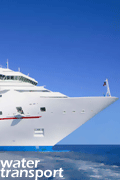Monday, March 30, 2009
Role and Purpose
This office administers the Maritime Administration's national security related programs. These programs provide commercial and government-owned shipping capability in times of national emergency and to meet Department of Defense strategic sealift requirements.
Major Activities
The Associate Administrator works directly for the Maritime Administrator.
The Ship Operations office manages and maintains the fleet of inactive, Government-owned vessels in the National Defense Reserve Fleet (NDRF), including the Ready Reserve Force (RRF). The RRF currently has 51 vessels. It provides a ready source of "surge" shipping, available when needed by the Department of Defense's U.S. Transportation Command (USTRANSCOM), to support rapid deployment of U.S. military forces. All NDRF activities, including the RRF, are funded from appropriations transferred to the Maritime Administration from Navy's National Defense Sealift Fund in accordance with a 1997 Memorandum of Agreement between the Maritime Administration and USTRANSCOM.
The Emergency Preparedness office develops and maintains plans for carrying out transportation support activities for any military mobilizations required due to a war or a national emergency. The office also maintains emergency resource evaluation data; helps formulate international and national plans for maritime emergency and mobilization activities; and operates the Maritime Administration's emergency operations and telecommunications centers.
The Sealift Support office manages the Maritime Security Program and the Voluntary Intermodal Sealift Agreement. These programs are designed to assure the availability of sufficient U.S. commercial sealift capability and the U.S. intermodal system to sustain U.S. military operations overseas in an emergency. This office also administers the transfer of U.S. ships to foreign interests.
The Ship Disposal Programs office is responsible for the administration and management of the disposal of non-retention National Defense Reserve Fleet vessels. Non-retention vessels are those merchant-type ships that have reached the end of their useful, economic life in service to the U.S. Government. The environmentally sound disposal of these vessels is accomplished through dismantlement/recycling, artificial reefing, sale for retrofit and reuse, deep-sinking in conjunction with Department of Defense at-sea exercises and donation to qualified non-profit organizations. The office is also responsible for management of the decommissioning activities of the Nuclear Ship Savannah which is a retention vessel.
Source: http://www.marad.dot.gov/
This office administers the Maritime Administration's national security related programs. These programs provide commercial and government-owned shipping capability in times of national emergency and to meet Department of Defense strategic sealift requirements.
Major Activities
The Associate Administrator works directly for the Maritime Administrator.
The Ship Operations office manages and maintains the fleet of inactive, Government-owned vessels in the National Defense Reserve Fleet (NDRF), including the Ready Reserve Force (RRF). The RRF currently has 51 vessels. It provides a ready source of "surge" shipping, available when needed by the Department of Defense's U.S. Transportation Command (USTRANSCOM), to support rapid deployment of U.S. military forces. All NDRF activities, including the RRF, are funded from appropriations transferred to the Maritime Administration from Navy's National Defense Sealift Fund in accordance with a 1997 Memorandum of Agreement between the Maritime Administration and USTRANSCOM.
The Emergency Preparedness office develops and maintains plans for carrying out transportation support activities for any military mobilizations required due to a war or a national emergency. The office also maintains emergency resource evaluation data; helps formulate international and national plans for maritime emergency and mobilization activities; and operates the Maritime Administration's emergency operations and telecommunications centers.
The Sealift Support office manages the Maritime Security Program and the Voluntary Intermodal Sealift Agreement. These programs are designed to assure the availability of sufficient U.S. commercial sealift capability and the U.S. intermodal system to sustain U.S. military operations overseas in an emergency. This office also administers the transfer of U.S. ships to foreign interests.
The Ship Disposal Programs office is responsible for the administration and management of the disposal of non-retention National Defense Reserve Fleet vessels. Non-retention vessels are those merchant-type ships that have reached the end of their useful, economic life in service to the U.S. Government. The environmentally sound disposal of these vessels is accomplished through dismantlement/recycling, artificial reefing, sale for retrofit and reuse, deep-sinking in conjunction with Department of Defense at-sea exercises and donation to qualified non-profit organizations. The office is also responsible for management of the decommissioning activities of the Nuclear Ship Savannah which is a retention vessel.
Source: http://www.marad.dot.gov/
posted by transport blogs
@ 9:24 PM
permanent link | Post a Comment
|
![]()









